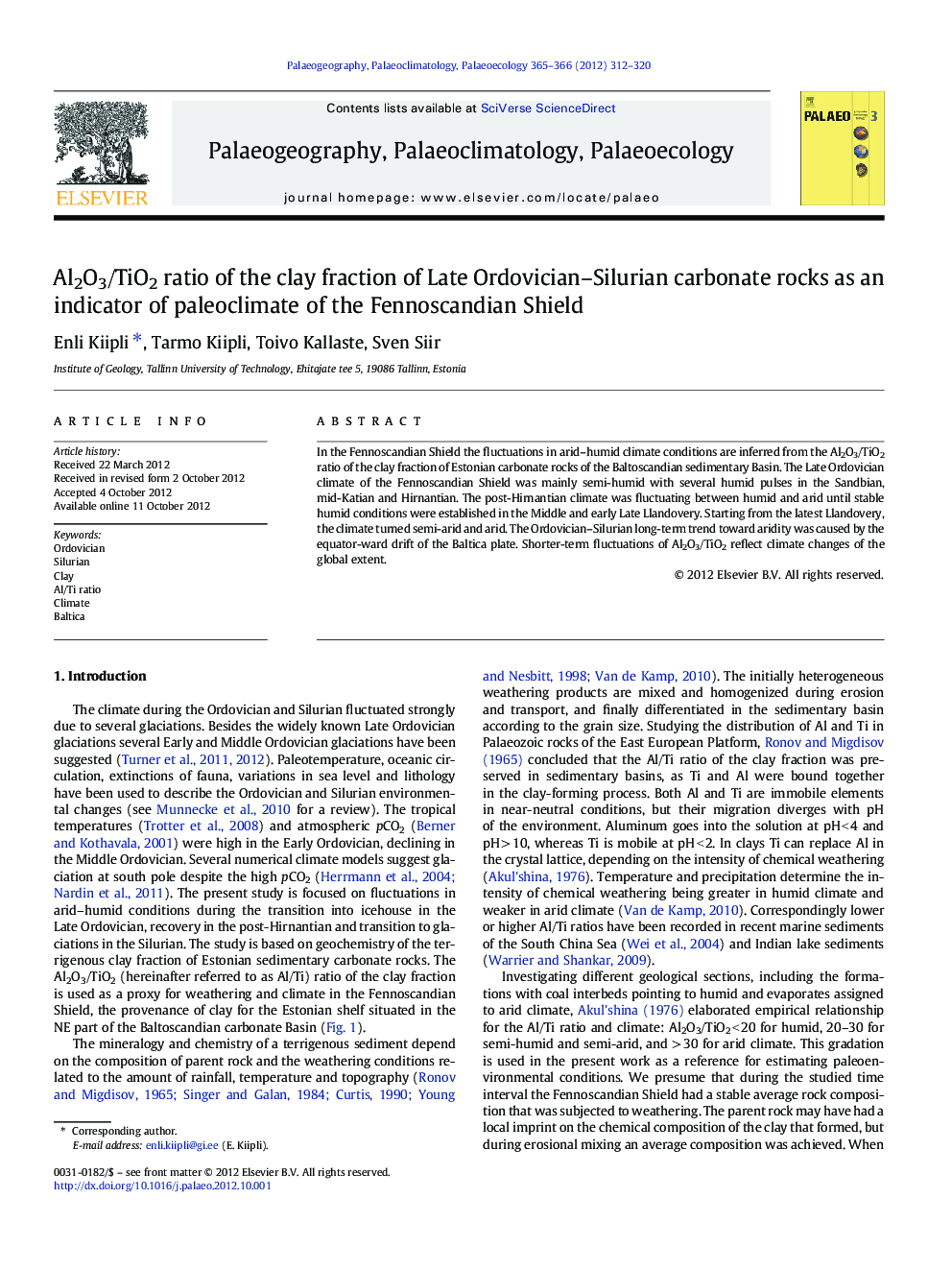| Article ID | Journal | Published Year | Pages | File Type |
|---|---|---|---|---|
| 4466745 | Palaeogeography, Palaeoclimatology, Palaeoecology | 2012 | 9 Pages |
In the Fennoscandian Shield the fluctuations in arid–humid climate conditions are inferred from the Al2O3/TiO2 ratio of the clay fraction of Estonian carbonate rocks of the Baltoscandian sedimentary Basin. The Late Ordovician climate of the Fennoscandian Shield was mainly semi-humid with several humid pulses in the Sandbian, mid-Katian and Hirnantian. The post-Hirnantian climate was fluctuating between humid and arid until stable humid conditions were established in the Middle and early Late Llandovery. Starting from the latest Llandovery, the climate turned semi-arid and arid. The Ordovician–Silurian long-term trend toward aridity was caused by the equator-ward drift of the Baltica plate. Shorter-term fluctuations of Al2O3/TiO2 reflect climate changes of the global extent.
► The Al/Ti of clay fraction reflects climate of the provenance. ► Increasing trend of Al/Ti ratio corresponds to Baltica drift equatorward. ► Al/Ti excursions show global and regional climatic changes.
